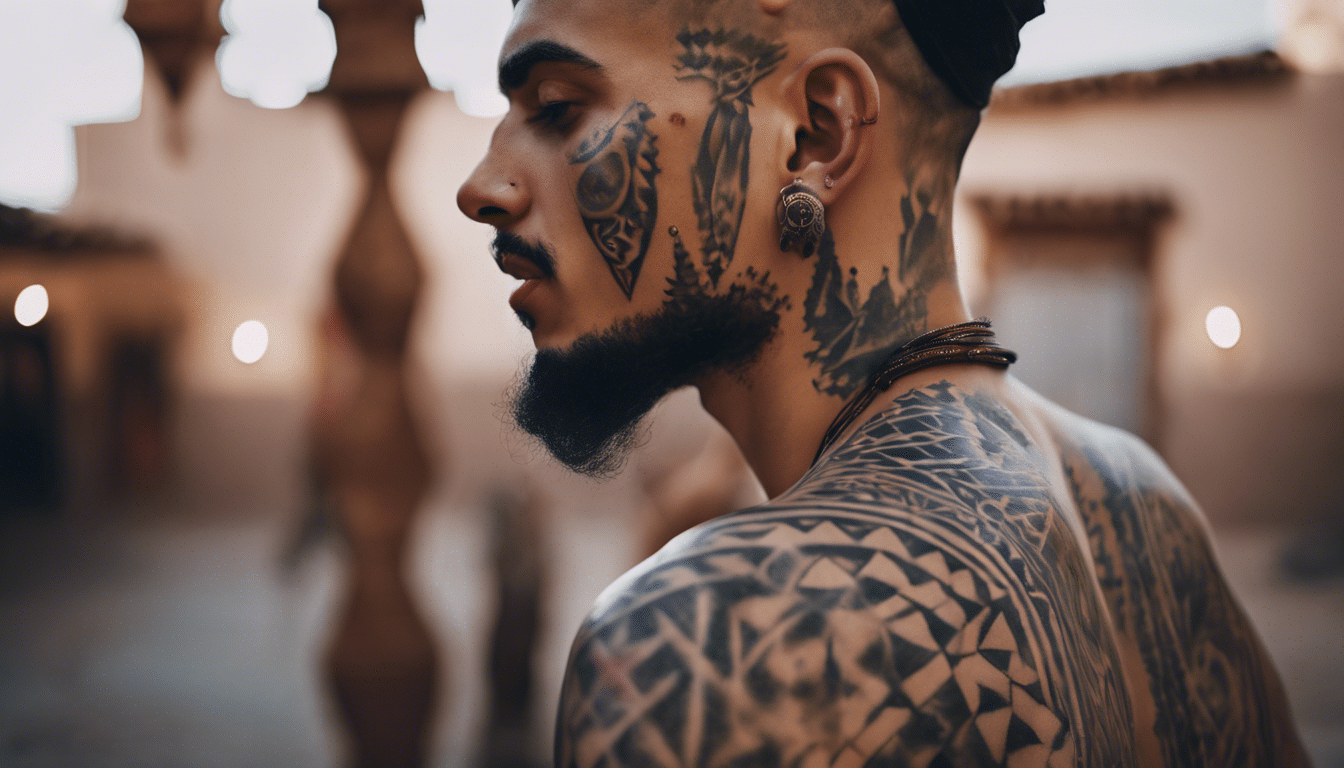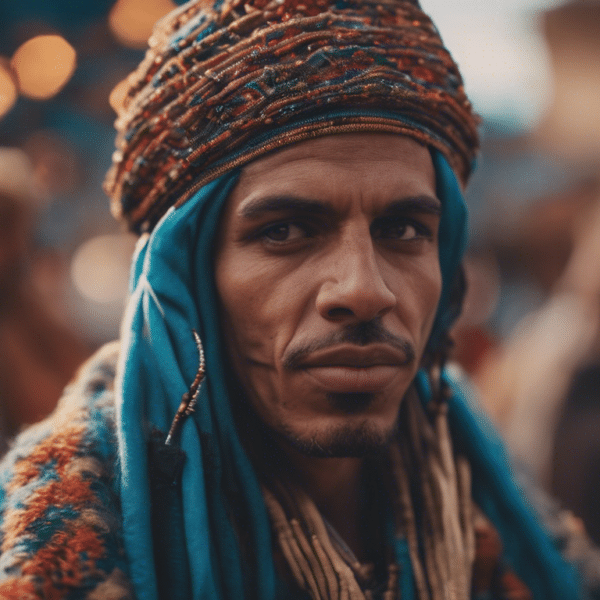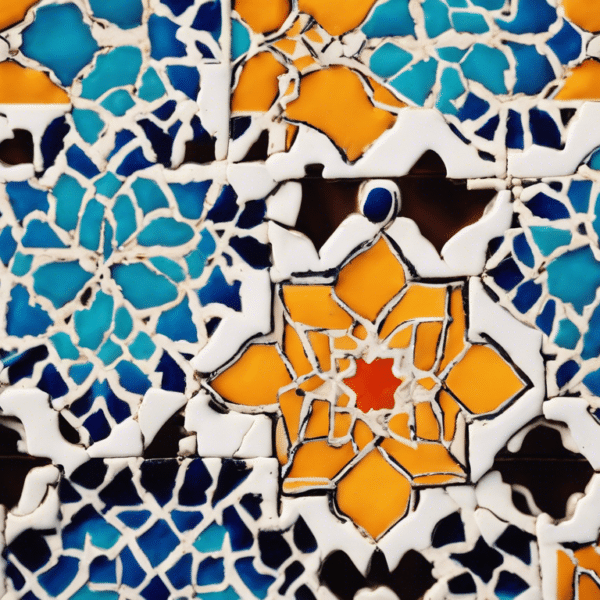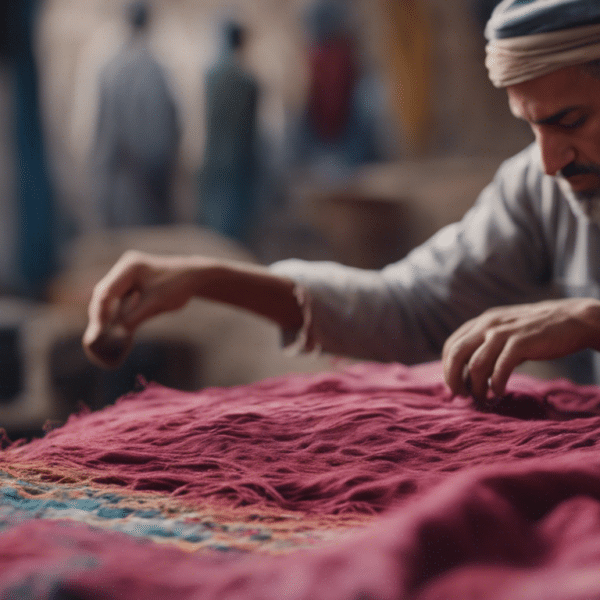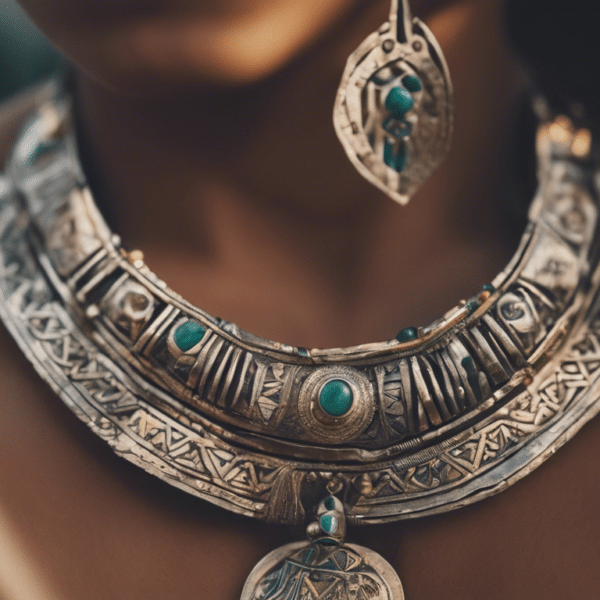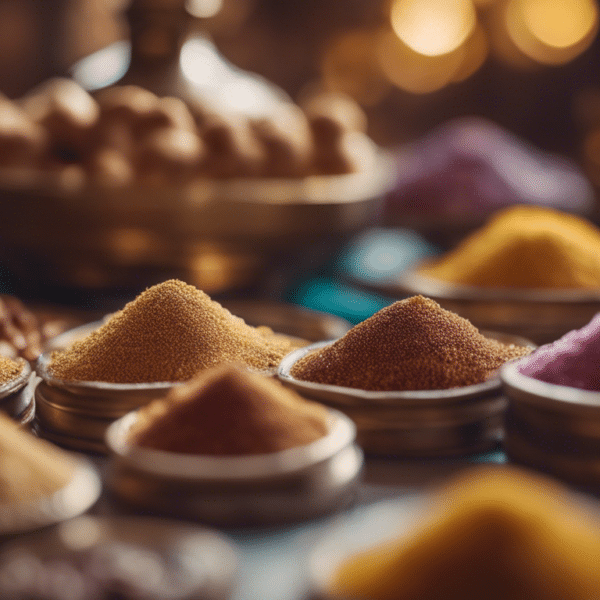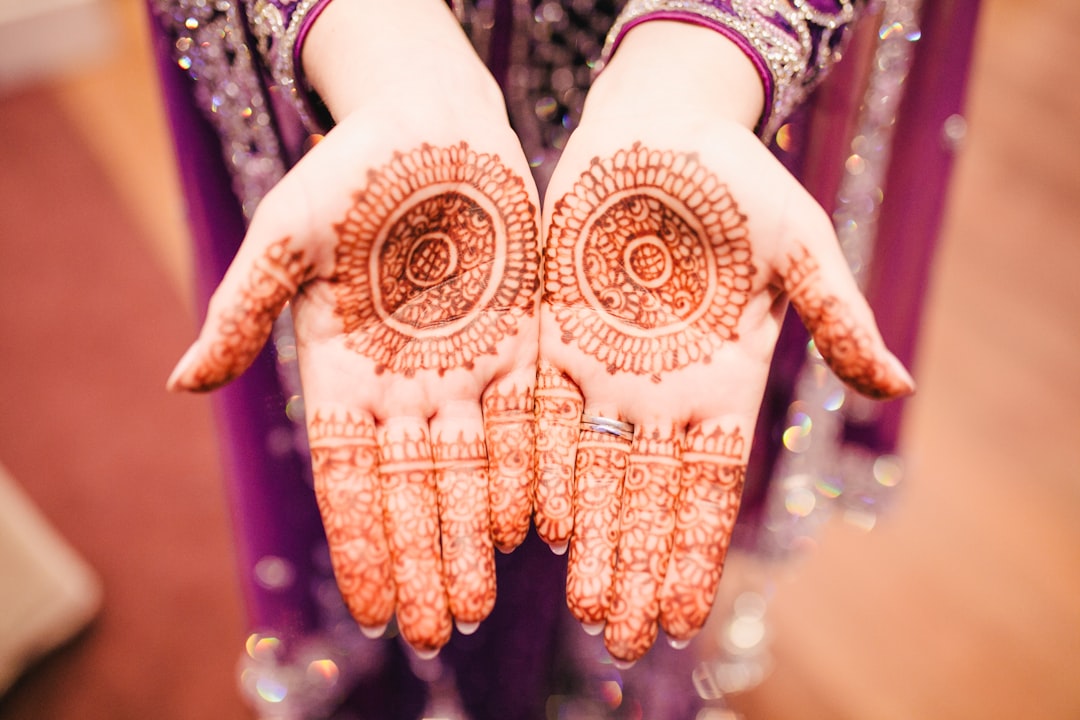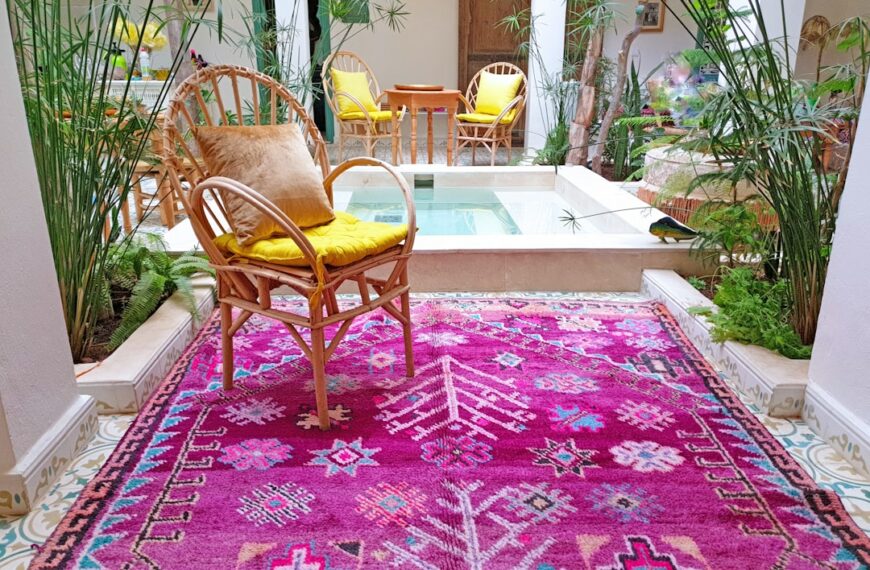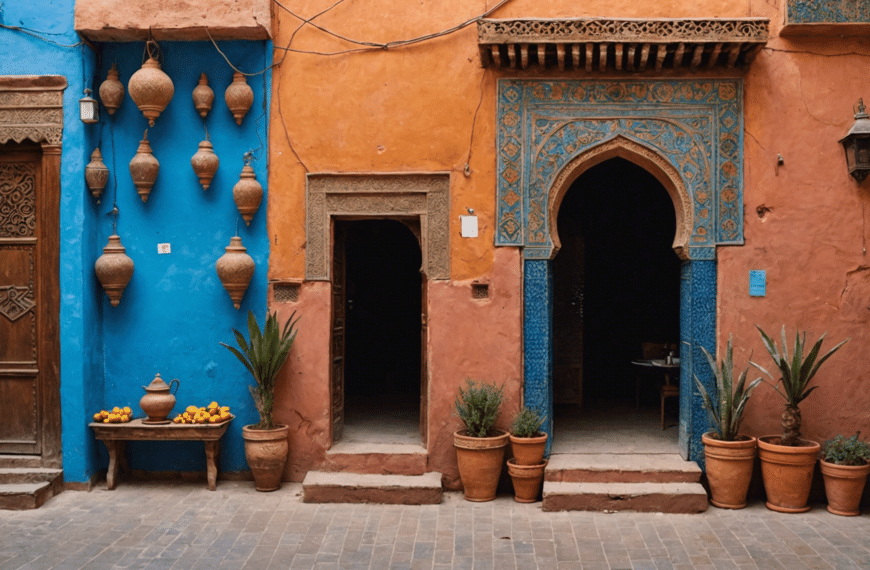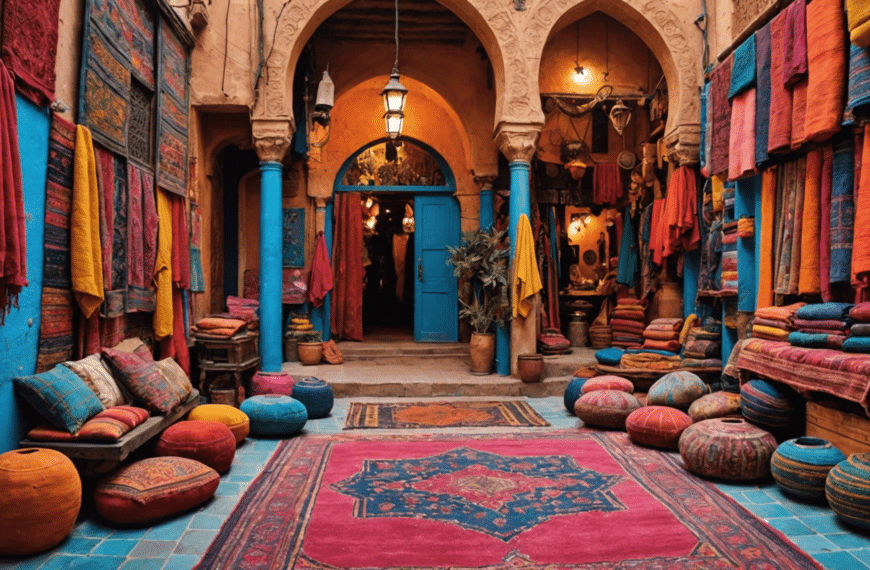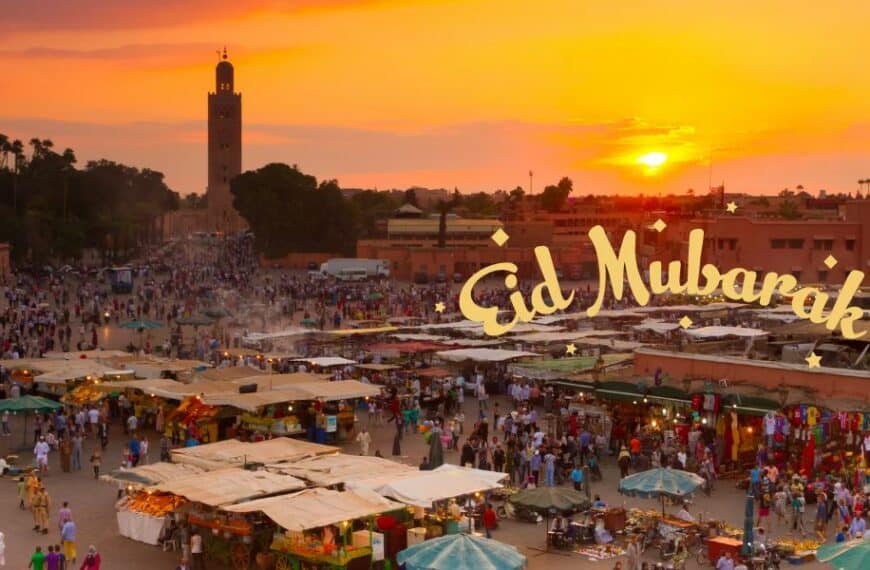In the labyrinthine alleys of Morocco, a tale of ink and identity is written on the canvas of skin. Traditional Moroccan tattoos, a tapestry of symbols and stories, have been etching heritage into the hearts and hands of generations. From the enigmatic Berber marks of the Amazigh to the spiritual symbols guarding against the unseen, join us on an exploration of the fascinating aspects of Moroccan tattoo culture. Discover a world where every line, dot, and shape whispers the secrets of a civilization both ancient and alive. Let’s unveil the allure that lies beneath the surface, where tradition meets flesh and culture becomes a permanent embrace.
Unveiling the Mysteries of Moroccan Traditional Tattoos
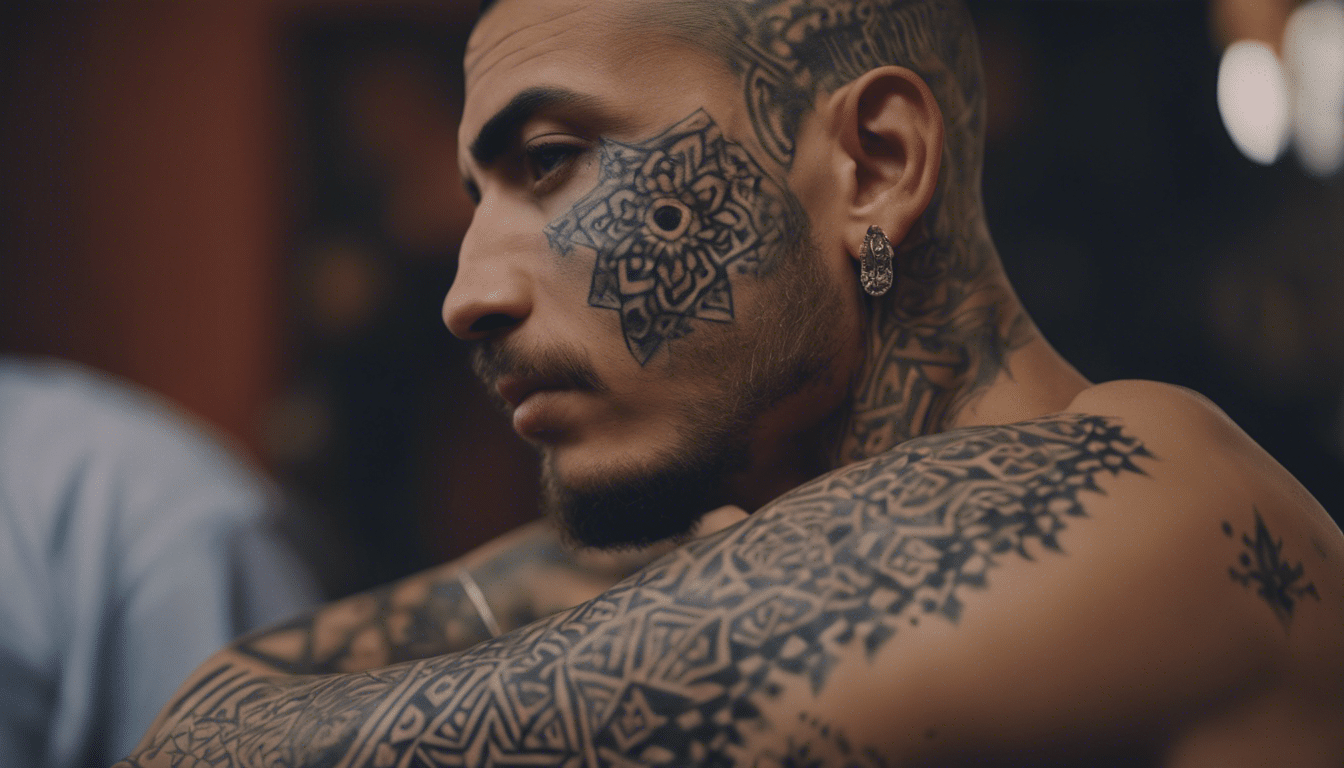
In the heart of Morocco, an ancient art form persists, etching its history into the skin of those who cherish it. This is the enigmatic world of Moroccan traditional tattoos, a realm where beauty and mystery intertwine. As I settled in Marrakech and started peeling the layers of its rich culture, the alluring patterns of these traditional tattoos caught my attention and lured me deeper into their extraordinary significance.
The Roots and Symbolism Behind the Ink
The practices of Moroccan traditional tattoos are steeped in history, reaching back through ages of tribal customs and beliefs. These tattoos are far more than mere adornments; they are a silent language, symbolizing protection, fertility, and even social status within communities. For many, they serve as talismans, inscribed with the hope that their mystical symbols and geometric patterns would ward off evil and bring good fortune.
The Diverse Styles Across Regions
Across the vast Moroccan terrain, from the rugged Atlas Mountains to the sweeping Sahara, different styles of tattoos have flourished. Amazigh tattoos, often characterized by dots, lines, and freehand geometric shapes, are a proud manifestation of Berber identity. In the southern regions, the designs become more complex, incorporating the shapes of local flora and fauna, each holding its unique symbolism and story.
Tattoo Techniques and Natural Ingredients
The traditional practice of tattooing in Morocco, unlike modern methods, relies on rudimentary tools and natural materials. The ink used is derived from a concoction of ash and plant-based substances, with henna being a preferred choice for its natural, temporary quality. The application is often performed using a simple needle or a thorn, a craft that requires incredible precision and patience.
A Vanishing Art Amid Modernity
Today, the ancient practice of traditional Moroccan tattooing faces the winds of change. Modernity and shifting societal views have led to a decline in this age-old art form, leaving only a few elders who still bear the marks of this cultural heritage. Preserving these practices has become a quest for cultural enthusiasts, keen on keeping the embers of this tradition glowing for future generations.
Tattoo Art as a Reflection of Moroccan Life
For those who delve into the world of Moroccan tattoos, it becomes evident that each mark tells a story of life’s journey—a journey filled with faith, nature, and the perpetual dance of tradition and innovation. The art reflects the resilient spirit of Moroccan people, their connection to the land, and their reverence for the customs passed down through generations.
As we uncover the mysteries of Moroccan traditional tattoos, the profound respect for this heritage grows. For those like myself, who have been captivated by the hum of Marrakech’s markets and the whispers of its history, the discovery is an invitation. An invitation to explore deeper, to appreciate the silent poetry inscribed on the skin, and to witness a vivid tapestry of Moroccan culture that continues to weave its narratives beyond the visible spectrum.
Roots and Historical Significance

Nestled at the crossroads of Africa and the Middle East, Morocco is a guardian of ancient traditions that have rippled through time. Among these, the art of traditional tattooing stands as a testament to cultural depth and historical significance. It’s an intimate form of expression that has woven its way through generations, carrying stories, beliefs, and identities.
Moroccan Traditional Tattoos: An Intricate Tapestry of Symbols
In the labyrinthine alleys of Morocco’s old medinas, buried deep within its history, are the facets of traditional tattooing. These tattoos, often geometric or symbolic in nature, are not merely aesthetic adornments. They are the carriers of messages and the guardians of ancient wisdom. Delicate lines and shapes merge to form potent symbols of protection, fertility, and identity.
Once used as means to ward off evil, convey social status, or mark significant life events, these tattoos are etched onto the skin with natural materials. The Berber women, in particular, have been pivotal in keeping this tradition alive. Their faces, hands, and feet often bear the distinct markings that tell tales of their Amazigh heritage.
Historical Roots of Moroccan Tattoos
Delving into the roots of Moroccan tattoos, one discovers a convergence of cultures. Influences from Sub-Saharan Africa, the Middle East, and even Europe have hatched a unique form of expression. Historical texts and excavations hint at tattoos being prevalent in the region since the time of the Pharaohs, suggesting an art as old as the hills upon which the Atlas Mountains sit.
Amazigh (Berber) tribes used tattoos as an intimate form of lore-keeping. Their indigenous scripts, Tifinagh, often found representation in tattoos, which became personal carriers of familial heritage and history.
The Significance Behind the Ink
Each tattoo in the Moroccan tradition carries a multitude of significances. A dot, a line, or a shape may encapsulate a myriad of meanings, from blessings and magic to healings and power. Here are some common elements found in Moroccan traditional tattoos and the meanings they hold:
– Triangle: Often representing the elements of nature—water, fire, and air—signifying balance and protection.
– Eye: A universal symbol to deflect the evil eye and surround the wearer with protection.
– Fish: Symbolizing fertility and abundance, a common theme in coastal regions of the country.
Cultural Preservation and Modern Movements
While the tradition of tattooing may seem timeless, it has faced waves of decline. Changing social norms and religious influences have rendered the practice endangered. However, there’s a resurgence of interest from the younger generation, who are keen to embrace their heritage and showcase it in a modern light.
Artisans and cultural enthusiasts are crafting a narrative that balances preservation with evolution. Modern tattoo artists are taking cues from the past to create contemporary designs that honor the intricate history of Moroccan tattoos.
In the global matrix, Moroccan traditional tattoo culture stands as a vibrant piece of the larger tapestry, inviting art connoisseurs like Elena to trace the cultural contours that define Morocco’s aesthetic and spiritual landscape. As one journeys through the souks and squares, the traces of Morocco’s tattoo heritage are there to be unearthed, serving as an enchanting chronicle of identity, artistry, and history.
In conclusion, Moroccan traditional tattoo cultures are not merely remnants of an era bygone; they are living, breathing emblems of a people rich in history and full of stories waiting to be told. Their roots run deep, and their historical significance cannot be overstated, offering a splendid insight into the Moroccan soul’s intricate artwork.
Symbols and Meanings in Moroccan Ink
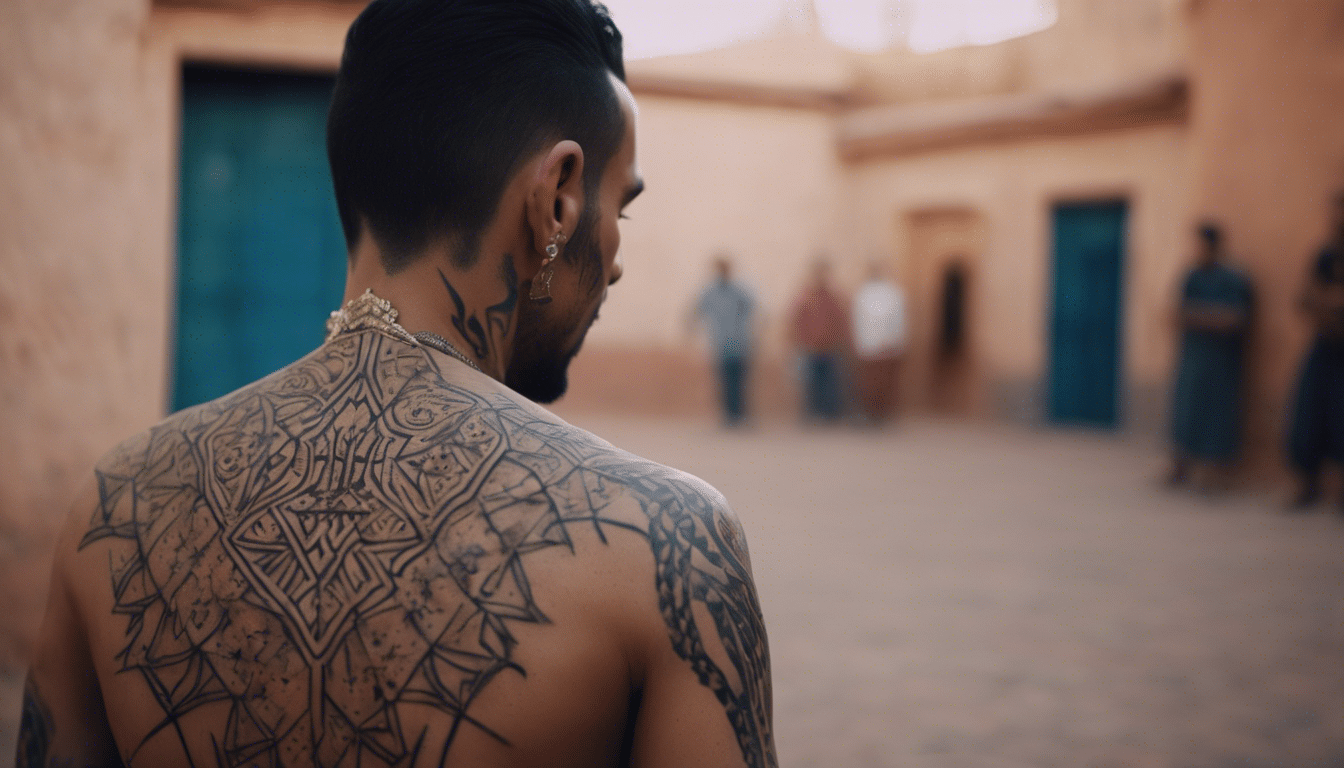
Nestled in the warm folds of North African culture, Moroccan traditional tattoos are a labyrinth of symbols and meanings that have intrigued nomads and travelers alike for centuries. Each curve and line in the complex designs carry with them stories from a bygone era, speaking of beliefs, desires, and traditions that have been etched not just into skin, but into the very fabric of Moroccan heritage.
For enthusiasts like our reader, it’s not merely about adorning the body, but understanding the whispers of history and the cultural dialogue that these tattoos sustain. So let us voyage into the heart of Morocco and unravel the mystery of its tattoo culture.
Moroccan tattoos, which find their roots in Berber customs, are replete with symbolism. Predominantly a female practice, these tattoos were traditionally administered at key moments in a woman’s life – during puberty, marriage, or pregnancy. But more than that, they served as amulets, with certain designs believed to offer protection, fertility, and healing.
The designs themselves are a language of their own. Common symbols include the diamond shape, often representing the evil eye or a shield against harm. The triangle is another frequent motif, symbolizing the elements of earth, water, and sky, or alternatively, womanhood.
Animals also play a vital role in this ink-based narrative. A tattoo of a lizard, for example, could signify the desire for strength and survival, as these creatures are renowned for their resilience in harsh desert environments. Meanwhile, geometric patterns such as squares and dots often act as metaphoric building blocks of life or pathways to spiritual enlightenment.
The gateway to understanding: Deciphering Moroccan ink
To truly comprehend Moroccan tattoo art, one must delve deeper into the labyrinth of designs that adorn the hands, arms, and feet of those who bear them. These tattoos are not mere decorations but are revered as powerful emblems of identity and cultural heritage.
One of the profound symbols is the Amazigh or Berber symbol known as the ‘free man’ mark, which signifies a sense of belonging and a declaration of identity. It starkly represents the freedom and autonomy of the Berber people, who have long prided themselves on their independence.
Other recurring motifs include the sun and the moon, classical elements representing the duality of existence, and the balance between the masculine and the feminine. The sun often stands for life and energy, while the moon – typically shown in its crescent form – may denote regeneration, womanhood, or fertility.
The artistry in Moroccan tattoo tradition
Moroccan tattoos are often recognized for their precision and skill, characterized by fine lines and intricate patterns that demand a steady hand and a discerning eye. The process of inking, which traditionally involved the use of natural dyes derived from henna, is both a rite of passage and a form of personal expression.
Skilled artisans, commonly women, would use needles or sharpened sticks to gently insert the pigment into the skin. The artistry involved is apparent not only in the execution of the tattoos but also in their composition, as each arrangement and pattern holds its own unique narrative.
Today, while modernity has seen a decline in the prevalence of traditional methods, the legacy of Moroccan tattoos lives on. Younger generations are rediscovering the beauty and significance of these ancestral markings, ensuring that the stories they tell are not forgotten.
Preserving the ink: A cultural renaissance
The revival of interest in traditional Moroccan tattooing is encouraging a new wave of cultural renaissance, where ancient arts are being preserved and celebrated. In a world yearning for authenticity and connection, these tattoos offer a compelling link to the past, allowing individuals to wear history on their skin and carry the legacy of their ancestors into the future.
Workshops and cultural events are becoming increasingly popular, as locals and tourists alike seek to learn about this rich tradition. For those passionate about celebrating Moroccan culture, this renaissance not only safeguards the art form but also strengthens the cultural identity of Morocco and its people.
Exploring Moroccan traditional tattoo cultures is more than a journey of aesthetic appreciation; it offers a canvas where the past meets the present, and where symbols etched in ink tell compelling tales of belief, resilience, and the human spirit. Each mark is not just a visual curiosity but a narrative waiting to be told, a stanza in the poetic chronicle of Morocco’s diverse cultural heritage.

